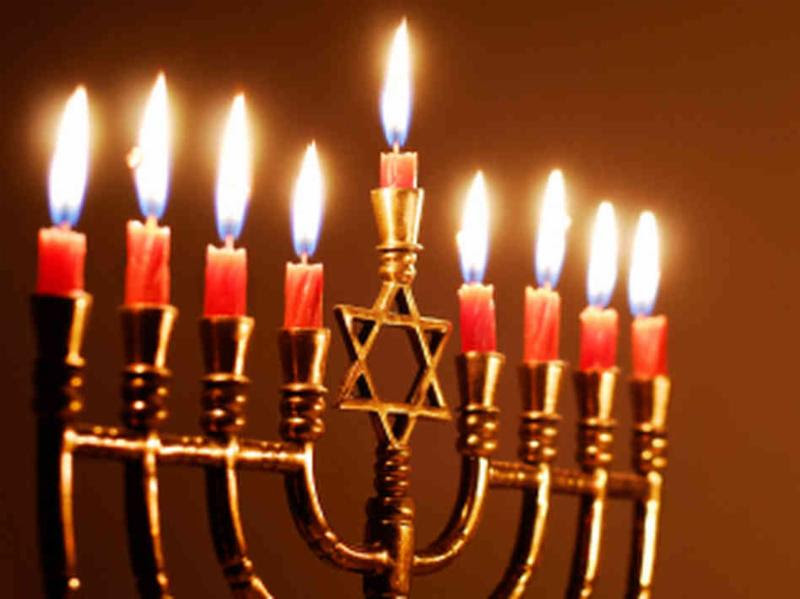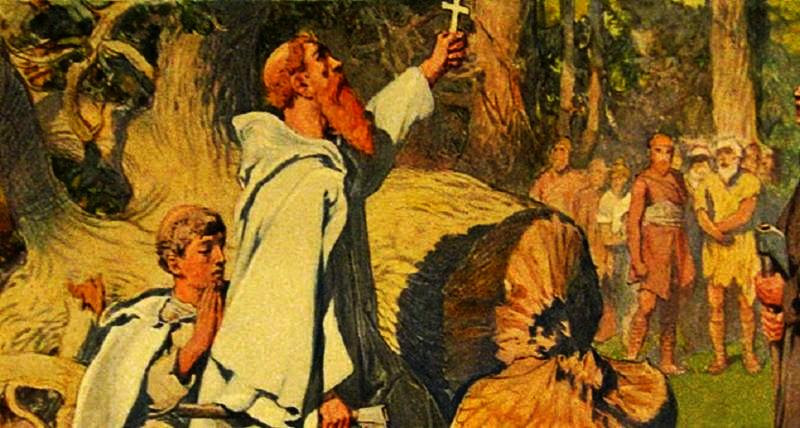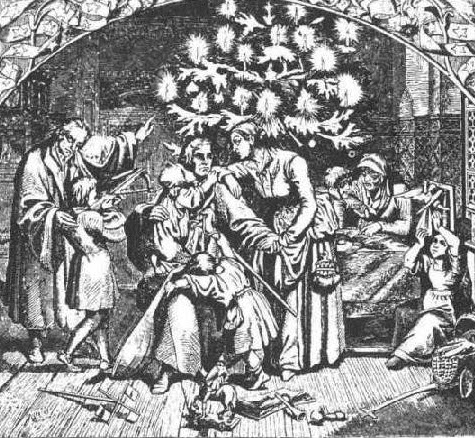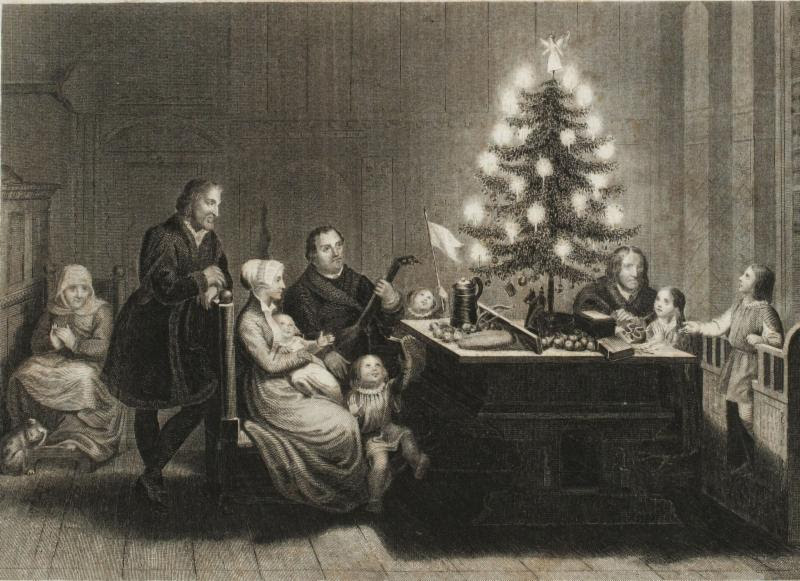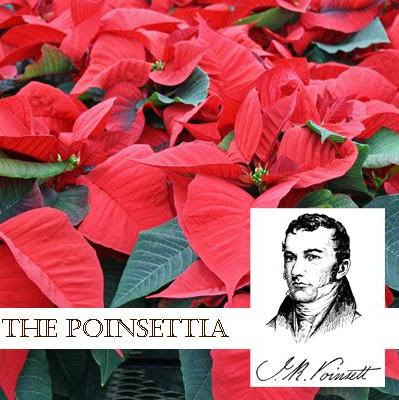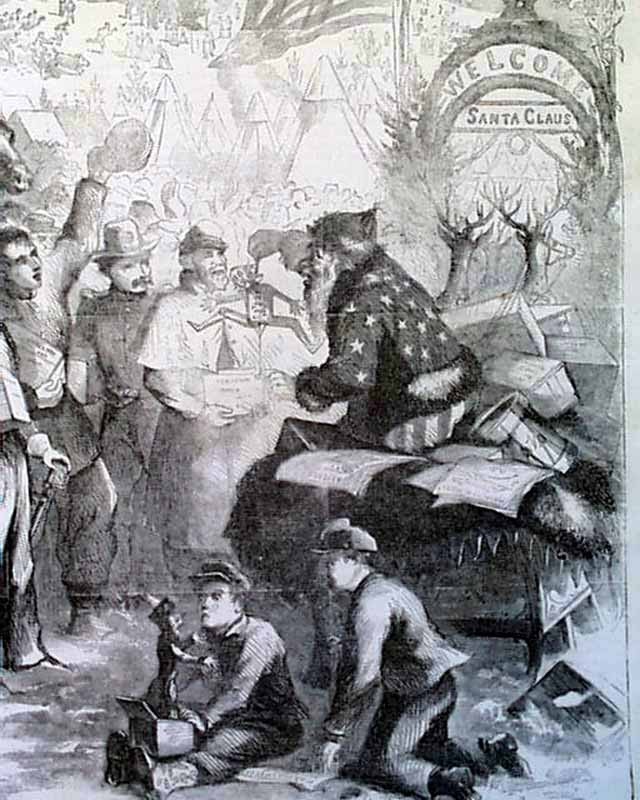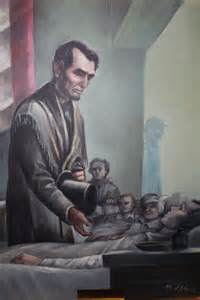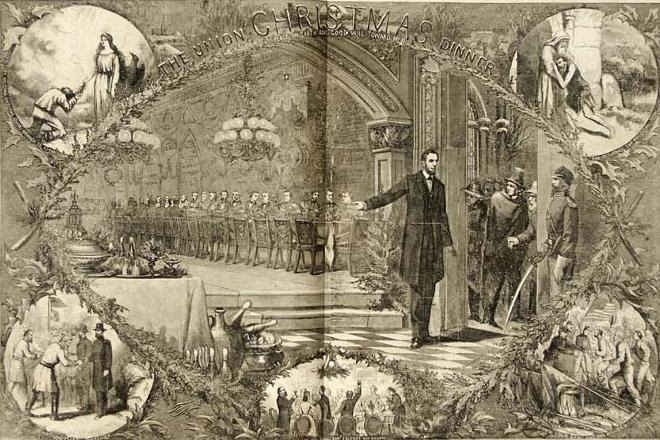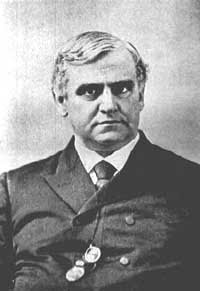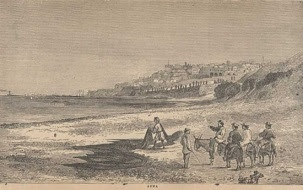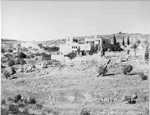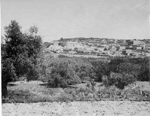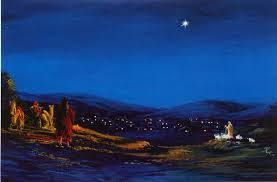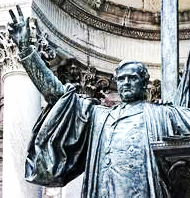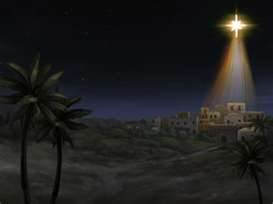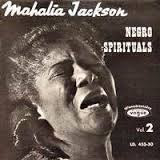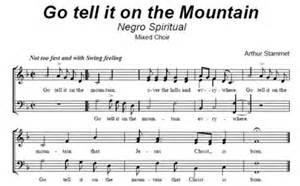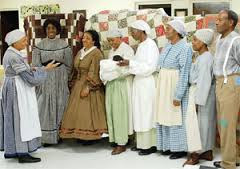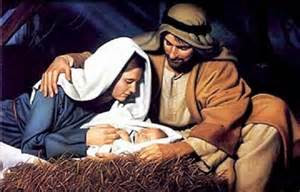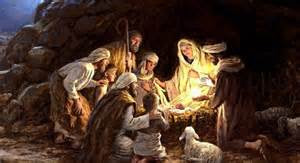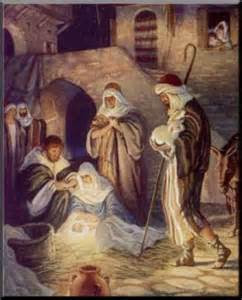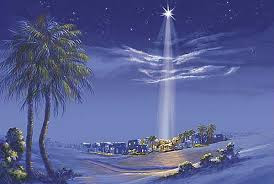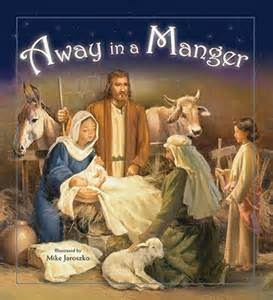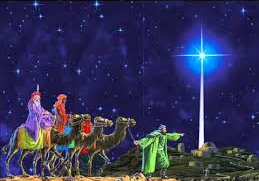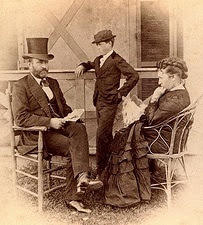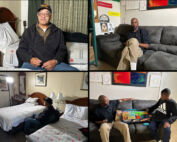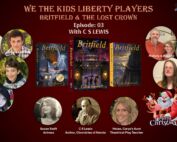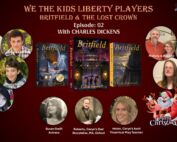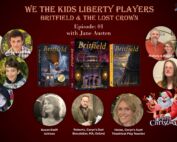American Minute with Bill Federer
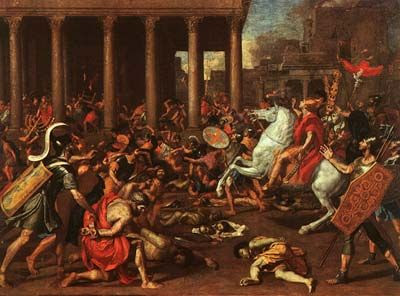
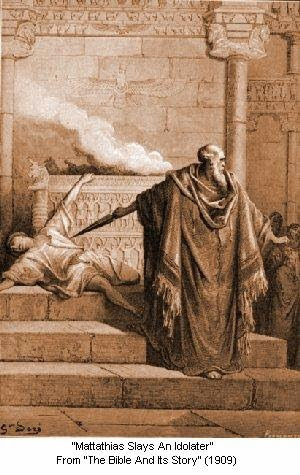
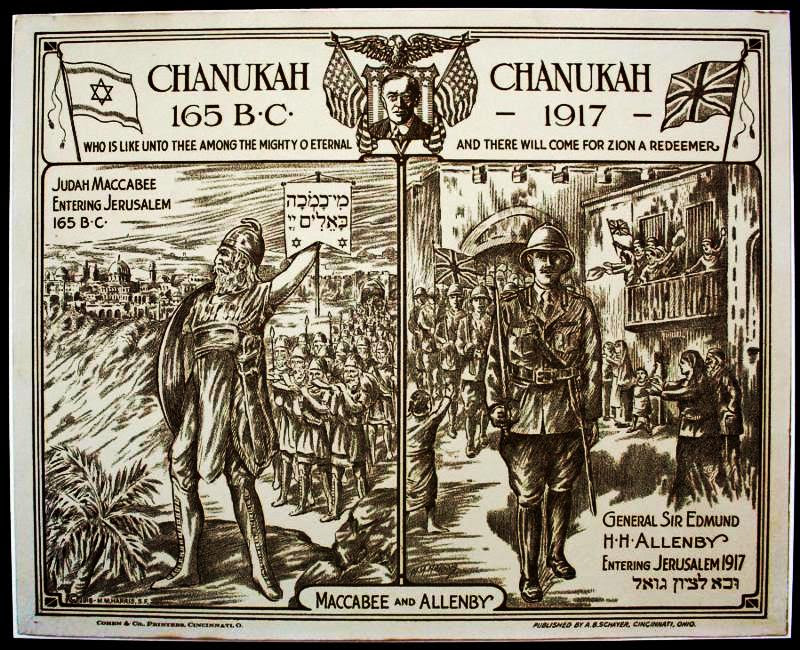
Mattathias and his sons began the Maccabean Revolt against Antiochus Epiphanes in 167 BC.
When the Temple was cleansed of all the pagan defilements, the oil lampstand, known as the menorah, was to be re-lit.
There was a problem–there was only found enough holy olive oil to burn for one day, and it would take a week before more could be made.
The decision was made to pour the small amount of oil in the lamp, and miraculously, it burned for an entire week!
The Feast of the Dedication of the Temple was mentioned in the New Testament, John 10:22:
“And it was at Jerusalem the Feast of the Dedication, and it was winter. And Jesus walked in the temple in Solomon’s porch.”
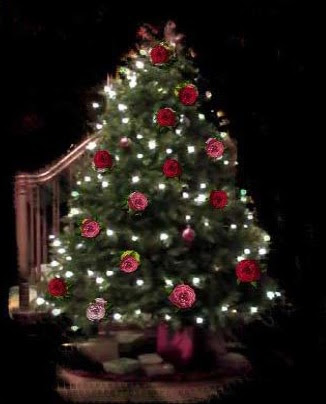
Lights at this season were added to the decorations on evergreen Christmas trees in the 16th century.
The Christmas tree’s origins can be traced back to the 200 AD’s, when the early church father Tertullian wrote:
“You are the light of the world, a tree ever green, if you have renounced the heathen temple.”
In the 6th, 7th and 8th centuries, missionaries from Ireland, Scotland and Britain evangelized Europe.
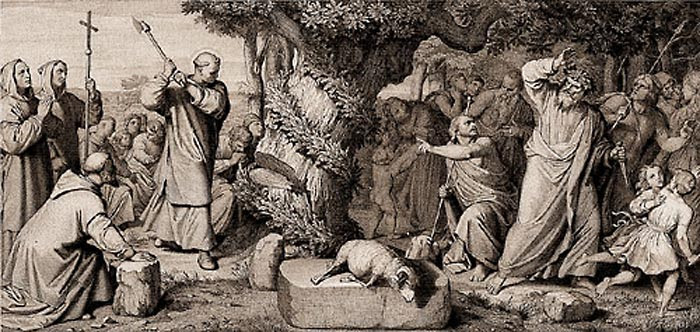
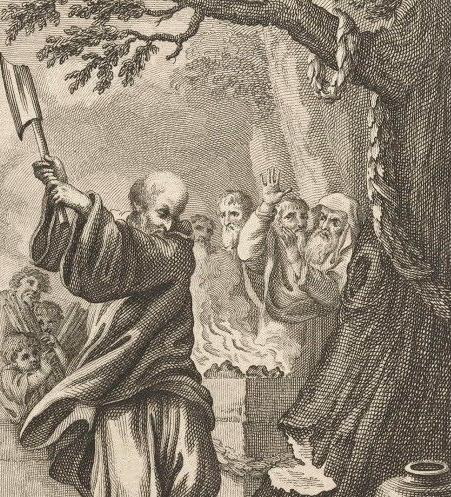
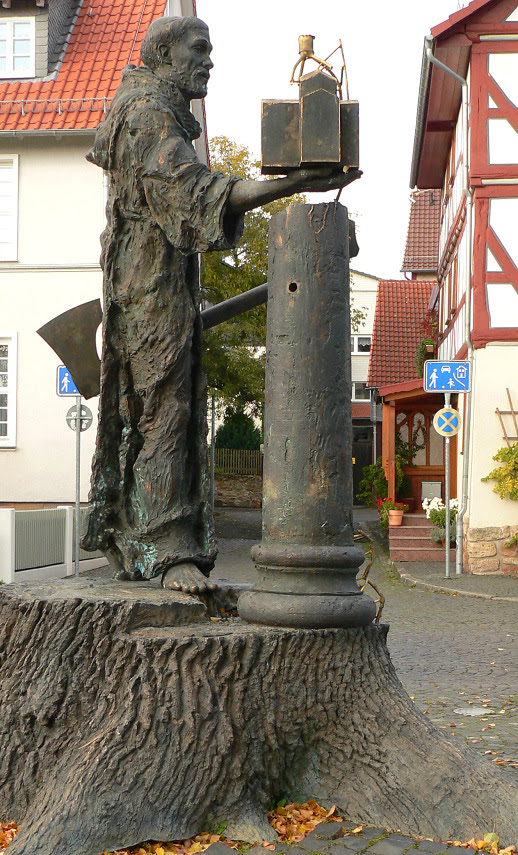
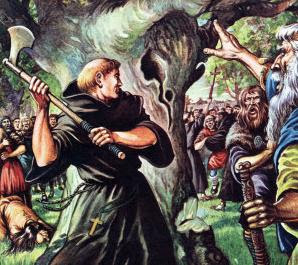
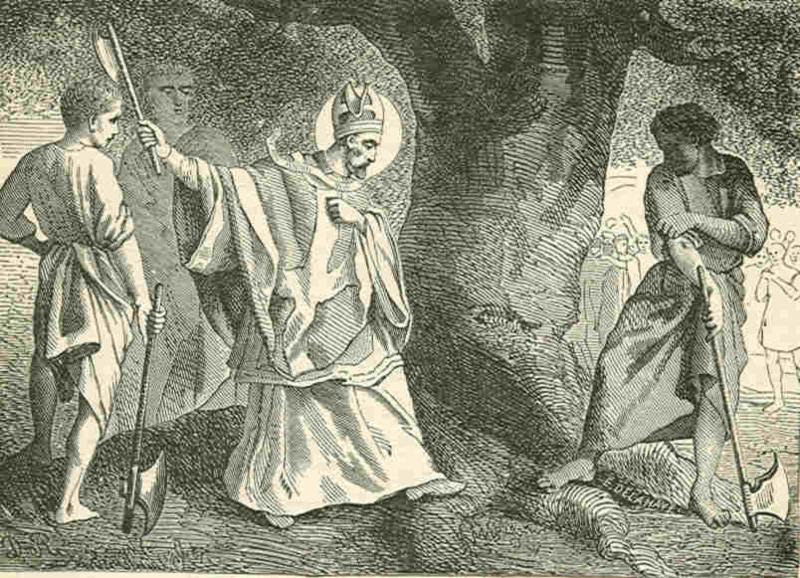
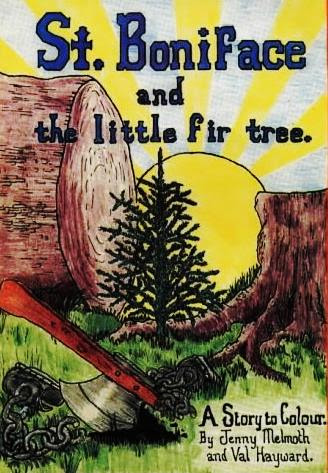

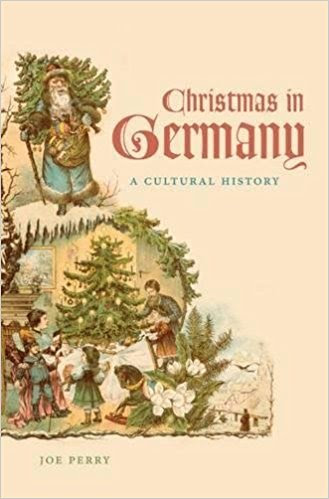
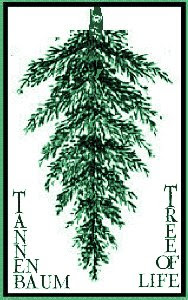
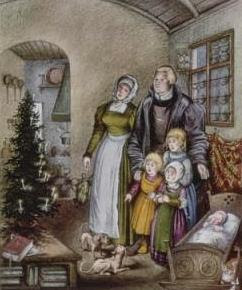
Martin Luther (1483-1546) is credited with popularizing the tradition of putting of lights on the tree.
In 1520, Martin Luther was walking home on Christmas Eve under the cold December sky and noticed the countless stars illuminating the night.
Luther returned home, and to the delight of his wife and children, set up an evergreen tree placing a great number of small candles on its branches.
He set up a creche scene under the tree so that the lights would appear as the stars above Bethlehem on the night of Christ’s birth.
Martin Luther said that all gifts come from the Christ Child, which in old German was pronounced ” Kris Kindl” (Christkindl), later pronounced ” Kris Kringle.”
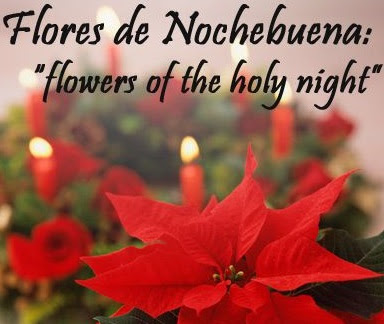
 In 1856, President Franklin Pierce put up the first Christmas Tree in the White House.
In 1856, President Franklin Pierce put up the first Christmas Tree in the White House.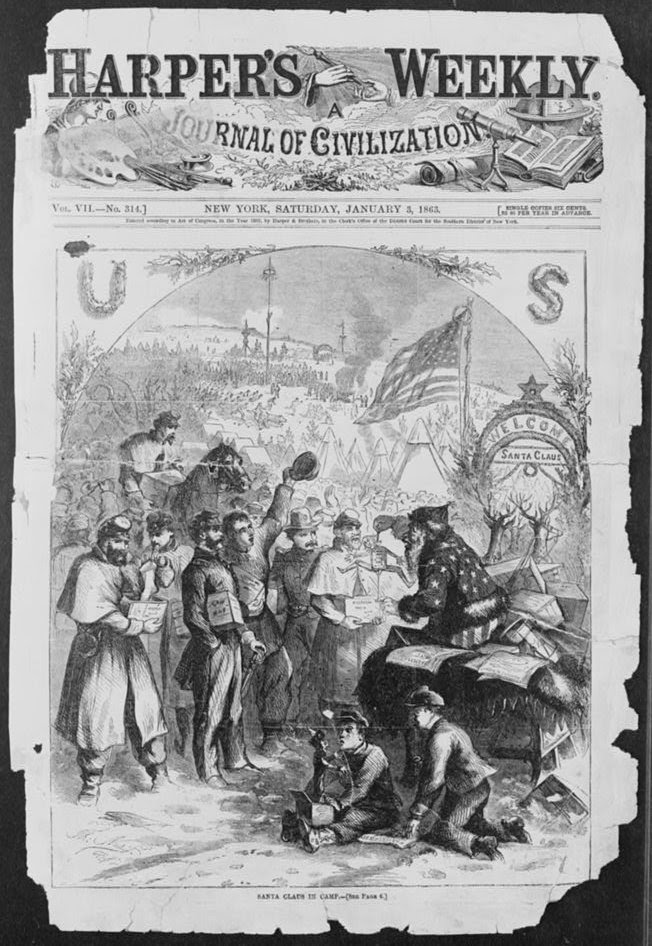
In 1862, Thomas Nast included a “North Pole” sign behind an illustration of St. Nicholas visiting Union troops.
It was meant as a political jab at the South to imply St. Nicholas was associated with the North.
Prior to this, St. Nicholas came from heaven, the celestial city, the New Jerusalem.
There Really is a Santa Claus-The History of St. Nicholas & Christmas Holiday Traditions
In 1862, President and Mrs. Lincoln visited soldiers in Washington, D.C., hospitals on Christmas Day.
On December 26, 1864, Lincoln gave a Christmas reception at the White House.
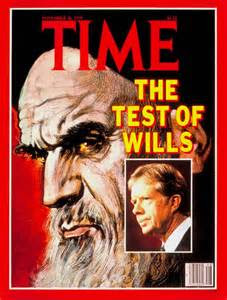
“Henry Longfellow wrote a Christmas carol in a time of crisis, the War Between the States, in 1864.
Two verses of that carol (“I Heard the Bells on Christmas Day“) particularly express my thoughts and prayers and, I’m sure, those of our Nation in this time of challenge … I would like to quote from that poem:
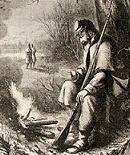
‘And in despair I bowed my head.
There is no peace on earth, I said.
For hate is strong and mocks the song
of peace on earth, good will to men.
more loud and deep,
God is not dead,
nor does he sleep.
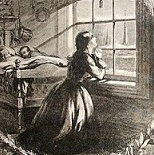
the right prevail,
With peace on earth,
good will to men.'”
Henry Wadsworth Longfellow not only wrote popular books and carols, but he was also a professor at Harvard, where he taught a student named Phillips Brooks.
Phillips Brooks, born DECEMBER 13, 1835, was the Episcopal bishop of Massachusetts.
While on a trip to the Holy Land in 1865, Phillips Brooks wrote:
“After an early dinner, we took our horses and rode to Bethlehem …
…
It was only about two hours when we came to the town, situated on an eastern ridge of a range of hills, surrounded by its terraced gardens.
… It is a good-looking town, better built than any other we have seen in Palestine …
Before dark, we rode out of town to the field where they say the shepherds saw the star.
…
It is a fenced piece of ground with a cave in it (all the Holy Places are cave
s here), in which, strangely enough, they put the shepherds …
…
As we passed, the shepherds were still ‘keeping watch over their flocks or leading them home to fold.'”
Phillips Brooks returned to Massachusetts in September of 1866 and wrote the carol, “O Little Town of Bethlehem“:
“O little town of Bethlehem!
How still we see thee lie;
Above thy deep and dreamless sleep,
The silent stars go by;
Yet in thy dark streets shineth,
The everlasting Light;
The hopes and fears
of all the years,
Are met in thee tonight.”
Another Christmas carol of this era is “Go, Tell It on the Mountain,” one of the most popular Negro Spirituals.
It was first published in 1865 in a collection complied by John Wesley Work, Jr.
The song was recorded by notable singers, including Mahalia Jackson, who once stated:
“I sing God’s music because it makes me feel free … It gives me hope.
With the blues, when you finish, you still have the blues.”
“Go, tell it on the mountain,
Over the hills and everywhere;
Go, tell it on the mountain,
That Jesus Christ is born.
While shepherds kept their watching
o’er silent flocks by night,
Behold, throughout the heavens
There shone a holy light.
Go, tell it on the mountain,
Over the hills and everywhere;
Go, tell it on the mountain,
That Jesus Christ is born.
The shepherds feared and trembled,
When lo! above the earth,
Rang out the angels chorus
That hailed our Savior’s birth.
Go, tell it on the 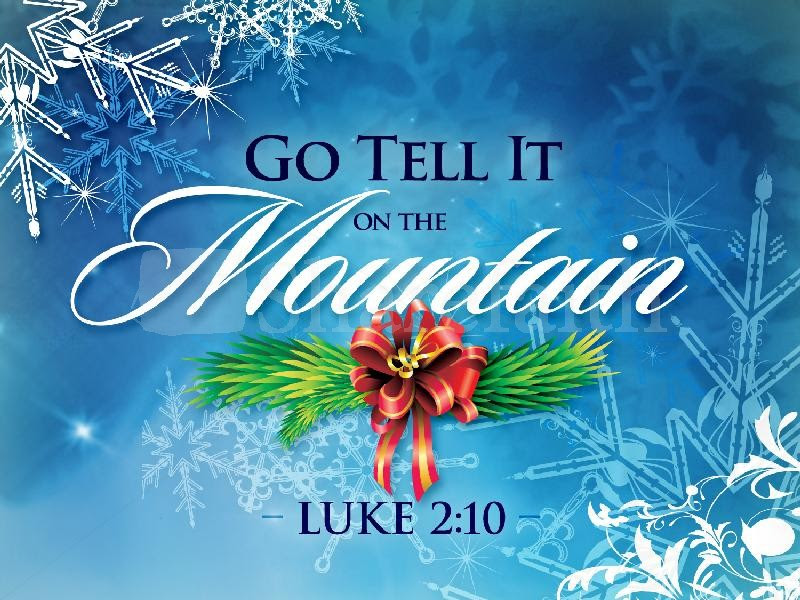
Over the hills and everywhere;
Go, tell it on the mountain,
That Jesus Christ is born.
Down in a lowly manger
The humble Christ was born
And God sent us salvation
That blessed Christmas morn.”
In 1865, William Chatterton Dix wrote the Christmas carol, “What Child Is This“:
What child is this, who, laid to rest
On Mary’s lap, is sleeping?
Whom angels greet with anthems sweet,
While shepherds watch are keeping? (Chorus)
This, this is Christ the King,
Whom shepherds guard and angels sing:
Haste, haste to bring him laud,
The Babe, the Son of Mary!
Why lies he in such mean estate
Where ox and ass are feeding?
Good Christian, fear for sinners here,
The silent Word is pleading. (Chorus)
So bring Him incense, gold, and myrrh,
Come peasant king to own Him,
The King of kings, salvation brings,
Let loving hearts enthrone Him.
Raise, raise the song on high,
The Virgin sings her lullaby:
Joy, joy, for Christ is born,
The Babe, the Son of Mary!
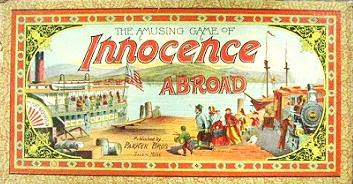
In 1867, Mark Twain visited the Holy Land, as recorded in his book, Innocents Abroad, 1869:
“In the starlight, Galilee has no boundaries but the broad compass of the heavens, and is a theatre meet for great events; meet for the birth of a religion able to save the world.”
In 1885, “Away in a Manger” was published in a Lutheran Sunday school book. It was edited in 1892 by Charles H. Gabriel and set to music in 1895 by William J. Kirkpatrick:
Away in a manger,
No crib for His bed
The little Lord
Jesus
Laid down His sweet head
The stars in the bright sky
Looked down where He lay
The little Lord Jesus
Asleep on the hay
The cattle are lowing
The poor Baby wakes
But little Lord Jesus
No crying He makes
I love Thee, Lord Jesus
Look down from the sky
And stay by my side,
‘Til morning is nigh.
Be near me, Lord Jesus,
I ask Thee to stay
Close by me forever
And love me I pray
Bless all the dear children
In Thy tender care
And take us to heaven
To live with Thee there.”
In 1836, Alabama became the first state to recognize Christmas Day as a holiday.
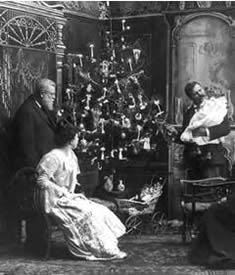
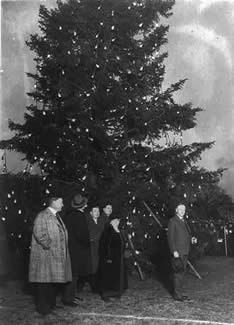
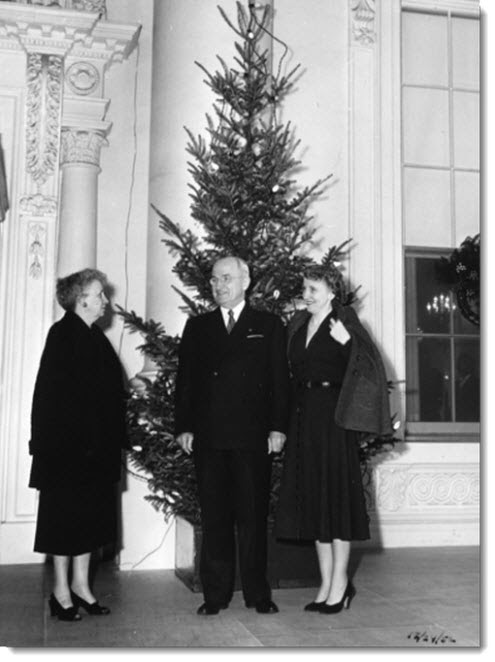
Â
 … Let us remember always to try to act … in the spirit of the Prince of Peace.He bore in His heart no hate and no malice – nothing but love for all mankind. We should … follow His example … Let us also pray for our enemies …Through Jesus Christ the world will yet be a better and a fairer place.”
… Let us remember always to try to act … in the spirit of the Prince of Peace.He bore in His heart no hate and no malice – nothing but love for all mankind. We should … follow His example … Let us also pray for our enemies …Through Jesus Christ the world will yet be a better and a fairer place.”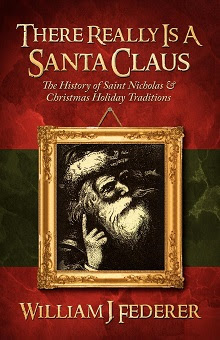
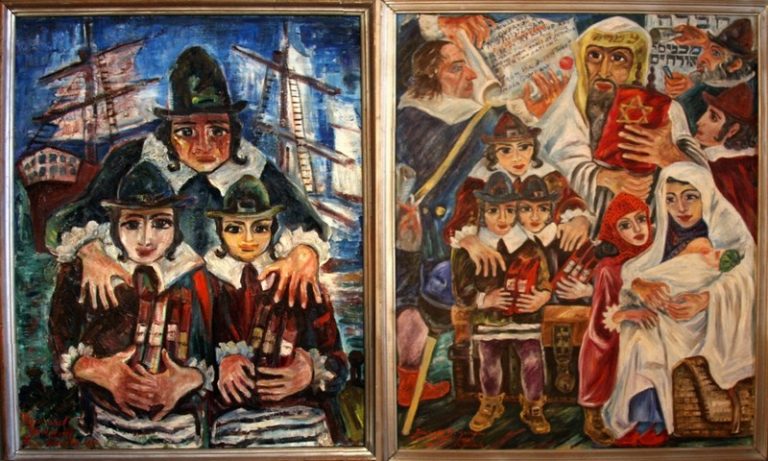 “We The Kids” is committed to Christian - Judeo values
“We The Kids” is committed to Christian - Judeo values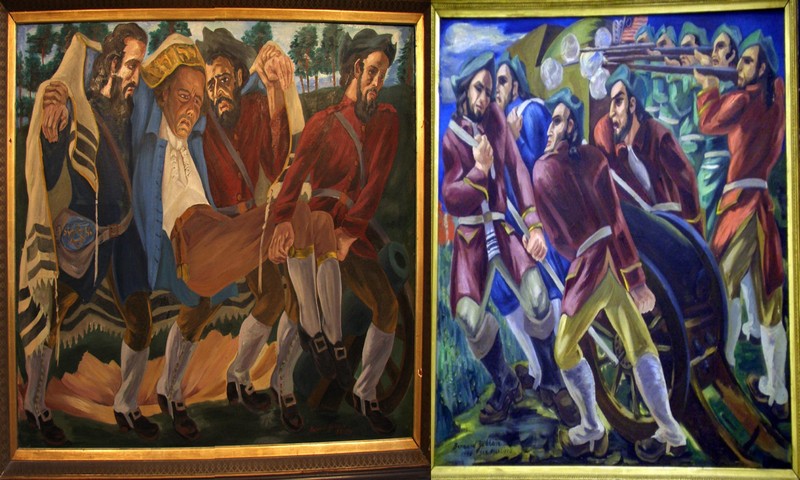 Revolutionary War Jewish patriots Christmas gift
Revolutionary War Jewish patriots Christmas giftRecent Posts
Christmas Kindness from Charity Helps Two Asheville Veterans
This Christmas season (2024), Two veterans from Asheville are experiencing the warmth of community support, thanks to the efforts of ABCCM and the Veterans Restoration Quarters. The assistance provided has been a beacon of hope […]
Episode 03: WTK Liberty Players and ‘The Britfield & The Lost Crown’ Radio Show | C. S. Lewis
Experience the captivating ‘Britfield and the Lost Crown’ radio show, presented by We The Kids Liberty Players. Explore themes of family, courage, and history in an engaging storytelling adventure featuring guest appearances by historical figures […]
Episode 02: WTK Liberty Players and ‘The Britfield & The Lost Crown’ Radio Show | Charles Dickens
Experience the captivating ‘Britfield and the Lost Crown’ radio show, presented by We The Kids Liberty Players. Explore themes of family, courage, and history in an engaging storytelling adventure featuring guest appearances by historical figures […]
Episode 01: WTK Liberty Players and ‘The Britfield & The Lost Crown’ Radio Show | Jane Austen
Experience the captivating ‘Britfield and the Lost Crown’ radio show, presented by We The Kids Liberty Players. Explore themes of family, courage, and history in an engaging storytelling adventure featuring guest appearances by historical figures […]
Ann M. Wolf “Blessed are the Ones” – Remembering 9/11/2001
September 11th, 2020
NASA Honored Mary W Jackson – Report by WTK Teen Mallory
NASA celebrated the agency’s first African American female engineer, Mary W. Jackson, with a ceremony to formally name the agency’s headquarters building in Washington in her honor. On February 26, 2021, a ceremony was held officially […]



